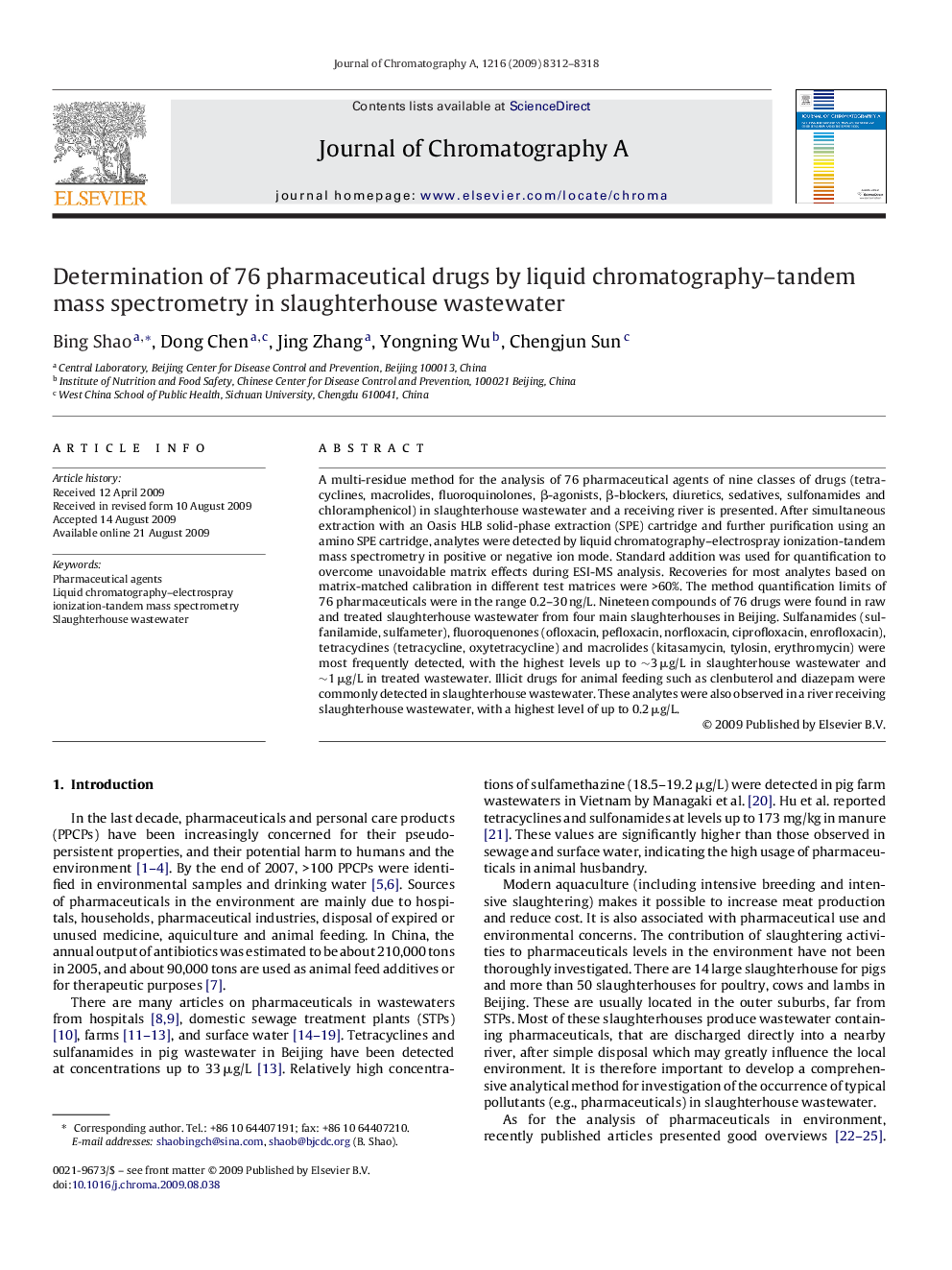| Article ID | Journal | Published Year | Pages | File Type |
|---|---|---|---|---|
| 1204740 | Journal of Chromatography A | 2009 | 7 Pages |
A multi-residue method for the analysis of 76 pharmaceutical agents of nine classes of drugs (tetracyclines, macrolides, fluoroquinolones, β-agonists, β-blockers, diuretics, sedatives, sulfonamides and chloramphenicol) in slaughterhouse wastewater and a receiving river is presented. After simultaneous extraction with an Oasis HLB solid-phase extraction (SPE) cartridge and further purification using an amino SPE cartridge, analytes were detected by liquid chromatography–electrospray ionization-tandem mass spectrometry in positive or negative ion mode. Standard addition was used for quantification to overcome unavoidable matrix effects during ESI-MS analysis. Recoveries for most analytes based on matrix-matched calibration in different test matrices were >60%. The method quantification limits of 76 pharmaceuticals were in the range 0.2–30 ng/L. Nineteen compounds of 76 drugs were found in raw and treated slaughterhouse wastewater from four main slaughterhouses in Beijing. Sulfanamides (sulfanilamide, sulfameter), fluoroquenones (ofloxacin, pefloxacin, norfloxacin, ciprofloxacin, enrofloxacin), tetracyclines (tetracycline, oxytetracycline) and macrolides (kitasamycin, tylosin, erythromycin) were most frequently detected, with the highest levels up to ∼3 μg/L in slaughterhouse wastewater and ∼1 μg/L in treated wastewater. Illicit drugs for animal feeding such as clenbuterol and diazepam were commonly detected in slaughterhouse wastewater. These analytes were also observed in a river receiving slaughterhouse wastewater, with a highest level of up to 0.2 μg/L.
